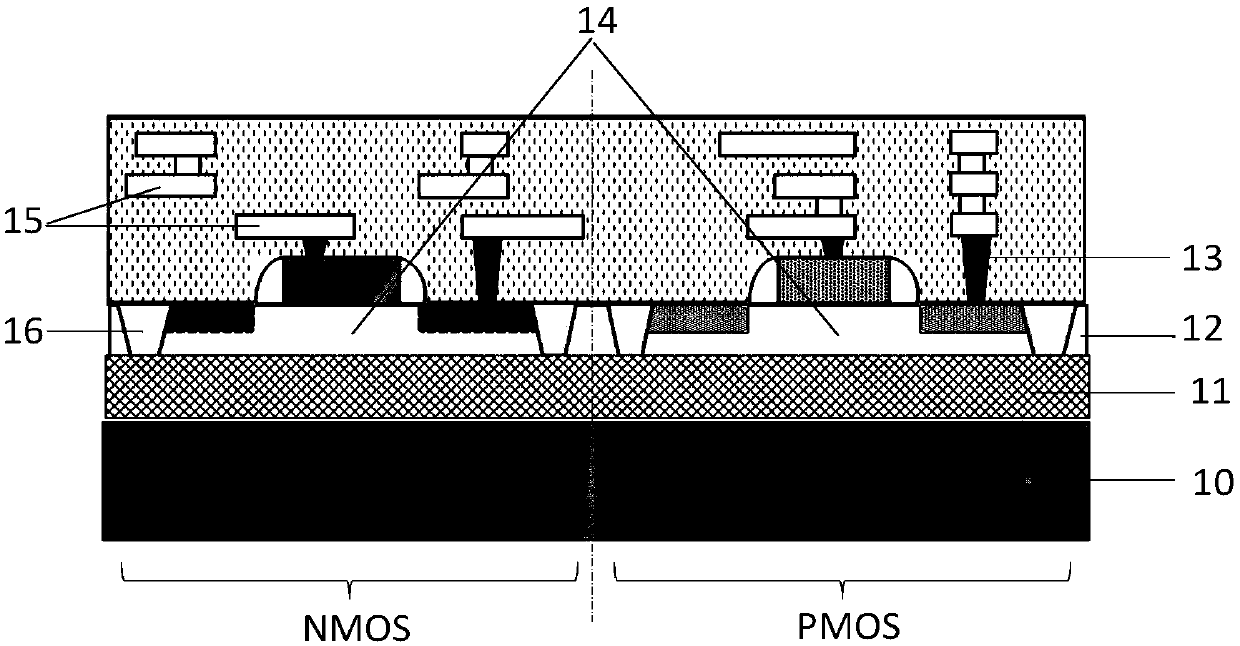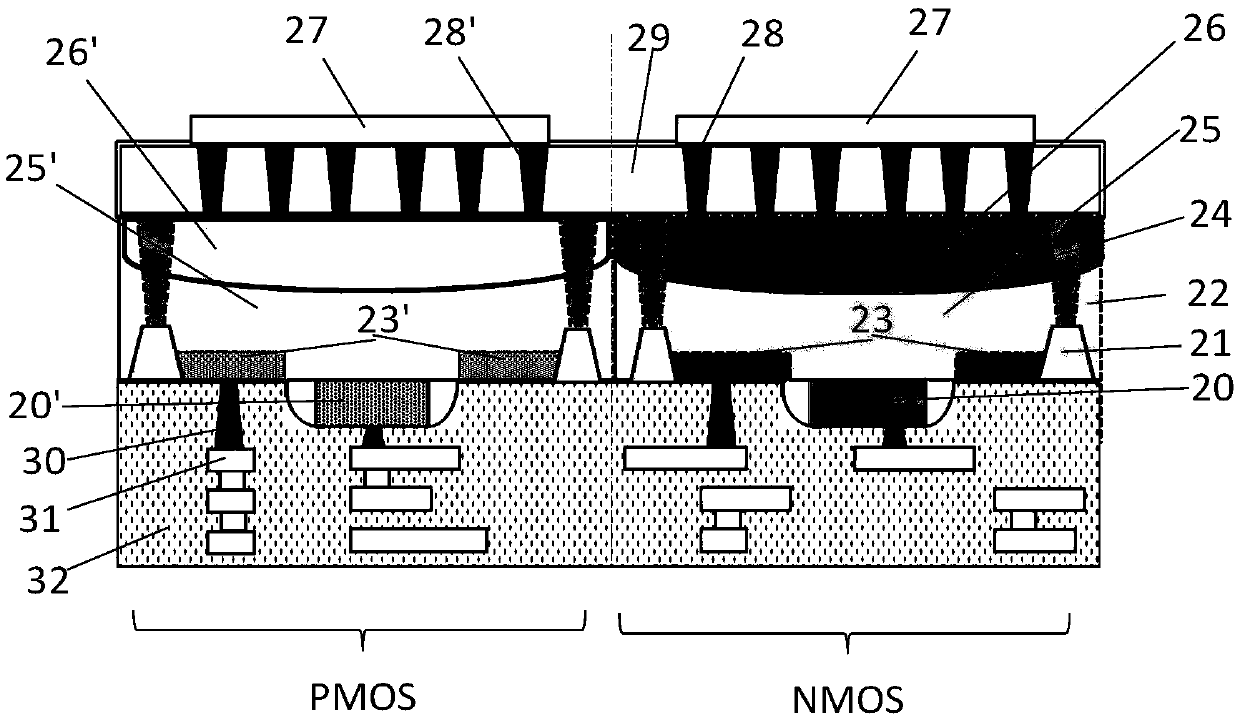Semiconductor-on-insulator device structure and method of forming the same
A device structure, semiconductor technology, applied in the direction of semiconductor devices, semiconductor/solid-state device manufacturing, electric solid-state devices, etc., can solve the problems of device performance degradation, abnormal MOS tube output curve, and effective connection formation, so as to prevent the degradation of device performance , avoid self-heating effect, reduce the effect of series resistance
- Summary
- Abstract
- Description
- Claims
- Application Information
AI Technical Summary
Problems solved by technology
Method used
Image
Examples
Embodiment Construction
[0039] The specific embodiment of the present invention will be further described in detail below in conjunction with the accompanying drawings.
[0040] It should be noted that, in the following specific embodiments, when describing the embodiments of the present invention in detail, in order to clearly show the structure of the present invention for the convenience of description, the structures in the drawings are not drawn according to the general scale, and are drawn Partial magnification, deformation and simplification are included, therefore, it should be avoided to be interpreted as a limitation of the present invention.
[0041] In the following specific embodiments of the present invention, please refer to figure 2 , figure 2 It is a schematic diagram of a semiconductor-on-insulator device structure according to a preferred embodiment of the present invention. Such as figure 2 As shown, a semiconductor-on-insulator device structure of the present invention includ...
PUM
 Login to View More
Login to View More Abstract
Description
Claims
Application Information
 Login to View More
Login to View More - R&D
- Intellectual Property
- Life Sciences
- Materials
- Tech Scout
- Unparalleled Data Quality
- Higher Quality Content
- 60% Fewer Hallucinations
Browse by: Latest US Patents, China's latest patents, Technical Efficacy Thesaurus, Application Domain, Technology Topic, Popular Technical Reports.
© 2025 PatSnap. All rights reserved.Legal|Privacy policy|Modern Slavery Act Transparency Statement|Sitemap|About US| Contact US: help@patsnap.com



